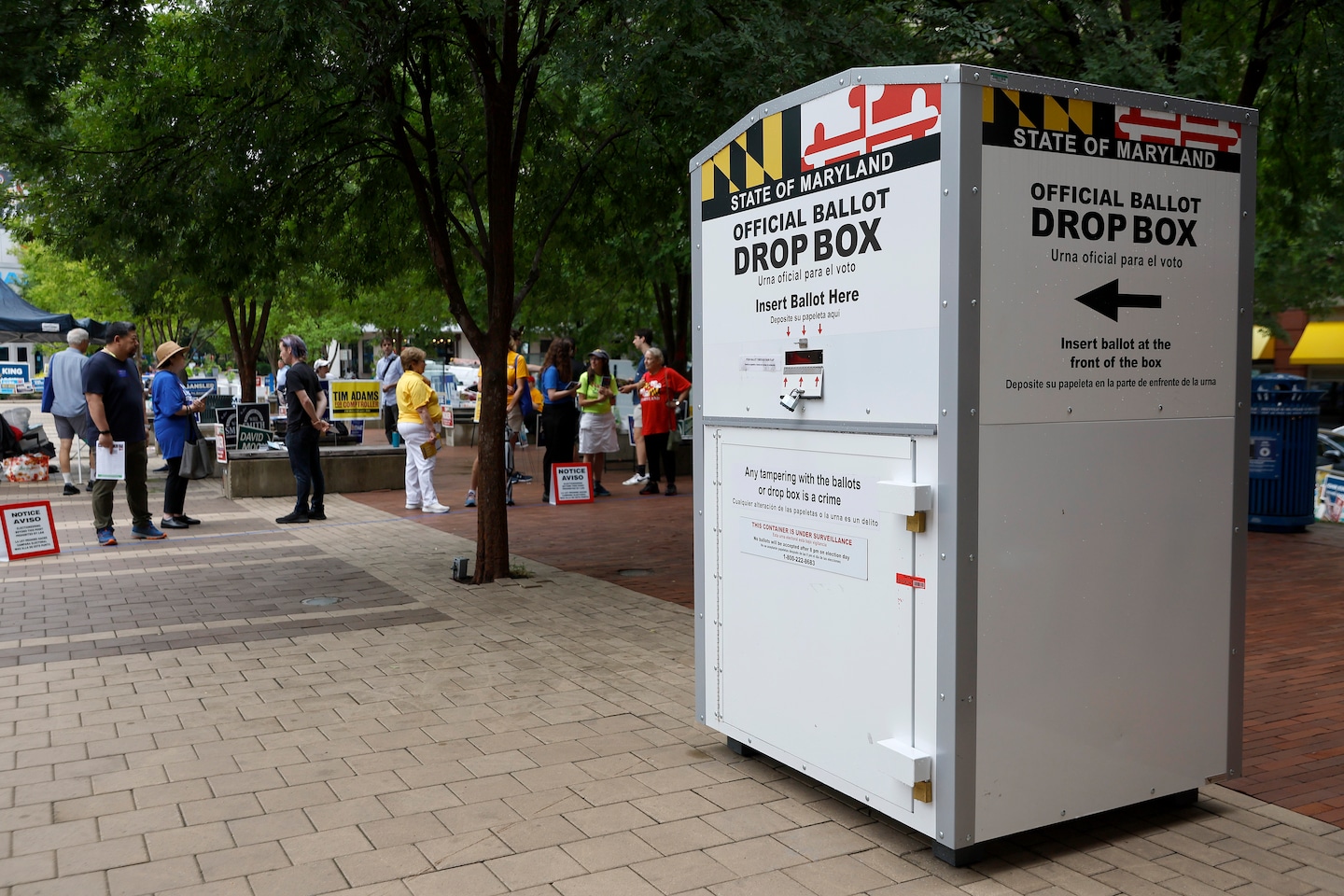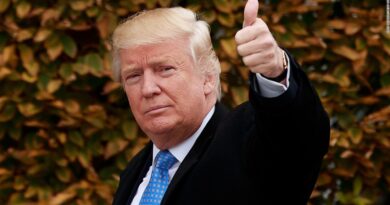Analysis | Claims that drop boxes were a vector for rampant election fraud keep crumbling

On Sunday, the Associated Press reinforced the lack of evidence with a report centered on ballot drop boxes. That mode of voting, allowing people to deposit completed ballots to be counted, increased in 2020, thanks to the coronavirus pandemic. The AP’s review of the use of the boxes across the country determined that no state reported “any instances in which the boxes were connected to voter fraud or stolen ballots,” nor were there incidents of vandalism that might have affected election results by destroying ballots.
In other words, there’s literally no evidence that drop boxes facilitated rampant fraud — or that they were a vehicle for fraud to any significant degree whatsoever.
The AP conducted a similar wide-ranging examination of fraud allegations last year. Then, it found that ballots considered suspicious in swing states amounted to only a small fraction of ballots cast. Even if all of those suspicious votes were illegal — which will not turn out to be the case — it wouldn’t have affected Trump’s loss in any state.
Those findings should not be expected to undercut the narrative offered by Trump’s allies. Drop boxes have emerged as a focal point of fraud claims thanks largely to the film “2000 Mules” from right-wing filmmaker Dinesh D’Souza.
Trump’s allies have seized on D’Souza’s suggestion that ballots were collected and submitted via drop boxes at a scale significant enough to affect the results of the 2020 election, despite the film’s complete failure to provide even one example of a fraudulent ballot being submitted. A cadre of right-wing legislators in the House nonetheless demanded an investigation into the “potentially widespread illegal activities” shown in the film — a sentence in which the word “potentially” has been asked to do more work than at any other point in its existence.
Wisconsin’s elected, conservative Supreme Court declared that, since drop boxes weren’t explicitly authorized in 2020, their use was illegal — and that this “weakens the people’s faith that the election produced an outcome reflective of their will.” With this dubious bit of argumentation, the boxes are banned moving forward.
D’Souza, still in salesman mode on his film (now only $19.99 to stream!), responded to the AP’s report with characteristic dismissiveness.
“This AP article contends that mail-in drop boxes are fine because: 1. Election officials say so. 2. There have been hardly any cases of dropboxes being vandalized or damaged,” he wrote on Twitter. “Everyone that has seen #2000Mules will recognize how pathetic and silly this is!”
For the record: I have seen “2000 Mules,” and I recognize that there is far more value in state officials from Democratic and Republican states saying clearly that there’s no evidence of abuse of ballot drop boxes than there is in granting D’Souza the benefit of the doubt on his movie’s unproven assertions.
After all, the movie centers on the idea that analysis of cellphone geolocation data shows thousands of people visiting multiple ballot drop boxes in the month before the 2020 election — visits that allegedly included depositing ballots as part of a wide-ranging scheme to throw the election. The film doesn’t show any examples of this analysis or any footage of people casting a vote at more than one drop box. The viewer is simply asked to take it on faith.
Which appears to be what D’Souza did. He didn’t complete the analysis, a group called True the Vote did. The organization’s Gregg Phillips — known to have made false, evidence-free claims about election fraud in the past — purportedly led the research comparing huge numbers of cellphone location pings with ballot drop-box locations. The film hinges entirely on Phillips’s claims, which, in a May interview with The Washington Post, D’Souza suggested he took at face value, in part because of purported law-enforcement review of the material.
“Phillips’s data has been shared with multiple authorities in Wisconsin, in Arizona and in Georgia,” D’Souza claimed. He cited a decision not to investigate from the Georgia Bureau of Investigation (GBI): “I read very carefully the response of the Georgia investigators to True the Vote’s data. They said, ‘Just because these guys went to 10 or more drop boxes, it doesn’t mean that they necessarily were committing crimes.’ ”
Here is the actual statement.
New – last month, the Georgia Bureau of Investigation told the GAGOP + True The Vote that geolocation of cell phones near multiple drop boxes wasn’t enough evidence to warrant investigation into alleged ballot harvesting in 2020, according to a letter obtained by GPB News. pic.twitter.com/EMneLZJgmK
— stephen fowler (@stphnfwlr) October 21, 2021
It does not say what D’Souza says. It also faults D’Souza and Phillips for failing to make a purported “whistleblower” available to be interviewed — someone D’Souza himself admitted he hadn’t spoken with.
One underappreciated detail of that letter is that the GBI apparently identifies the type of data at issue. Apparently, the evidence True the Vote handed over was not GPS data — which can be (but isn’t always) quite precise — but “cell site location information” (CSLI). That means it is triangulated data derived from a cellphone’s connections to cell towers, not data from onboard GPS connections. It is, in other words, much less precise. Reinforcing the idea that this data is what the True the Vote analysis depended on is D’Souza’s reference to a 2018 Supreme Court case arguing for the use of precisely this sort of data by law enforcement.
Even were the data from phone GPS pings, the idea that True the Vote could identify visits to drop boxes is unlikely. Finding that someone is within 100 feet of an address associated with a drop box is very different from having precise evidence that they visited the drop box at that address. Reduce the accuracy of the data, and the claim deteriorates further.
Phillips did not respond to a request for comment for this article. I called a phone number I believed was associated with Azeddine Rahlouni, identified by the GBI as having worked with Phillips on the data analysis. I received a call back from someone identifying himself as “Azeddine” who disconnected when I informed him that I was calling from The Washington Post.
D’Souza did respond to queries from The Post. He said that True the Vote “did not exclusively use CSLI data” and that True the Vote told him that the GBI had misrepresented his data. He claims that he was shown “the specific moments of several mules,” though no such movements were included in the film.
Contrast all of this with the AP’s straightforward finding: No one, in any state, articulated any incident of fraudulent voting through drop boxes. And it’s not as though this goes unexamined; ballots submitted through drop boxes were subject to the same validation processes as other absentee ballots. Trump’s allies — including those in state or county election offices — have had 20 months to find examples of fraud. They haven’t.
Americans are, therefore, asked to either believe D’Souza — whose claims have been broadly debunked and whose movie shows literally no examples of the pattern he alleges — or the reporters of the AP and the bipartisan elections officials with whom they spoke.
Only in America in 2022 would this be a difficult choice for some people.


